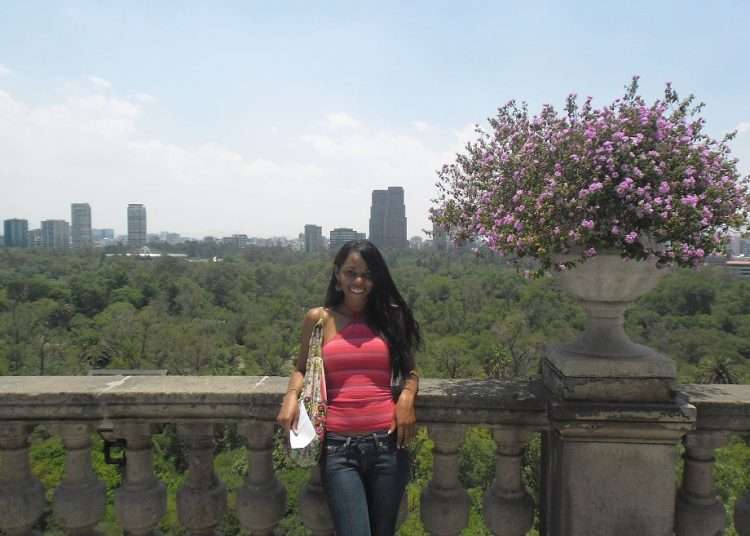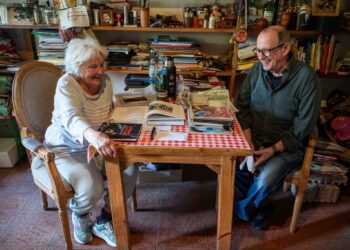The women of the desert, like the wind
blow, make dunes, hills.
Gloria Anzaldua
“My name is Alina. I am a mother, a woman, black, a migrant born in Cuba. Lawyer, feminist and anti-racist activist…now a writer. My ancestors have put in my body many stories that they tell us. I have recognized these pieces that make me up and break down inhabiting so many other women. I weave words to nit nets. I fog up my mirror to leave messages. I am trying. At least.”
Alina Herrera Fuentes goes through all these identities; and in them her existence is intertwined with that of her women ancestors, although she knows perfectly well how to enter and how to leave; she knows where Alina is in the midst of all the clothes she wears. She came to this time with the mission of naming urgent things, and I dare to say that she is one of the most lucid young voices in the transnational Cuban public debate. Everything she writes is supported by her own weight; at the same time and precisely because of the strength of her pen, I can’t leave anything she writes for later. If Alina says, we listen to her, we read her.
Ten years ago she left her work and her life in Cuba to go to Mexico to reencounter love. With migration, she has learned to inhabit the margins and in that border space she presents herself and exists, while taking care of her altar how she can, honoring her Afro-Cuban religious ancestry, but also giving herself without fear to the richness of Mexican spirituality. She mothered her son there, whom she decided to give birth to in Cuba for more than one reason, among them: because the island is the place where most of the affections that nurture her remain. She told me this about her migration process:
***
I did not intend to emigrate. I fell in love with my current partner and after keeping a distance relationship for two years, there came a time when being away and seeing each other sporadically became unfeasible for us; at that moment I began to consider the possibility of coming to Mexico, where he lived. My first attempt was to apply for a tourist visa at the Mexican embassy, which was denied. As in Cuba I felt good and fulfilled professionally, my first idea was to go and get to know, try first without much pressure to know if that would be a good place for me or not, because I thought that emigration was a decision that would represent for me a strong uprooting; migrating is an experience that crosses you in many dimensions and in which you gain a lot, it is true, but you also lose and I was aware of that.
So going for tourism was my idea of a balance between what I would gain and what I would lose, or at least understand what the experience would be like for me, even in the sphere of the couple because that would be a perfect test period to understand how I would feel being in that land, but also living day to day with my partner. But I was not able to go through that experience because, as I said before, they denied me a visa. Why? Well, because of a whole series of prejudices and taboos, and also political restrictions; we know that Mexico has a land border with the United States and that it is a place of passage for many people, in addition to the fact that it is undeniable that in the consulates there is more mistrust of racialized women, which is my case. So many things were against me. We are talking about the year 2011, a time when there was still no free mobility for Cuban citizens, so to apply for a tourist visa to Mexico I had to request an invitation letter from the person who would be responsible for me abroad. That, plus all the documents that the consulate required to grant the visa, I delivered them fulfilling all the requirements, but the answer was negative. After that “no” I mobilized to look for a work contract, which already represented another type of commitment and that had a much greater weight than what it would represent to go just as a tourist, because when you do a work mobility you land and you already have to charge your batteries to work, to adapt to the daily dynamics of the country, which in my case was a territory considered “of the Third World,” with a cultural, labor and contractual dynamics different from the one I was used to in Cuba, where even then I had acted in the branch of law as a prosecutor. That is the moment when my idea of the trip begins to change: I was no longer going to evaluate a territory or a society, I was ready to work and settle there. That’s how I came to Mexico City: for love and for work.
How was the arrival in Mexico?
The change was very abrupt when I arrived. This is a country, let’s say, not so socially innocuous for women in terms of gender-based violence and security; things that for someone who comes from a context like Cuba are very terrifying.
I remember that the first thing my friends — women — told me when I arrived was not to go out alone after nine at night, not to ride the subway in tight clothes, no shorts, no necklines, no taxis…they were all a series of codes to get around the city that I had to learn by force. My welcome here, if I had to summarize it, was: “you came to a war zone because you are a foreigner, a woman and racialized.”
On the one hand, I attracted a lot of attention because where I lived, which was a fairly multicultural and bohemian neighborhood in Mexico City, not many Afro-descendant people circulated, so sometimes people spoke to me in English thinking I was American, or in Portuguese, thinking I was Brazilian; they almost never considered that I might be Cuban, something that changed a lot in the workplace, where my colleagues did know where I was from and I think that contributed a lot to my experiences of harassment in that work context.
That’s where I discovered a very ugly stigma, which is that Cuban women are considered “easy” and willing to prostitute ourselves or deliver ourselves “on a platter.” And that is something that, in my case, I do not dissociate from the racial variable, because when you intersect that I am young and black, the experience of being a woman in another country takes a particular path. So, on the one hand, in social and public life it was funny and sometimes even flattering that my identity aroused so much curiosity and so many looks; on the other, in other areas such as work it was very uncomfortable because it always put me on alert. I was harassed twice in my workplace but in neither of them did I give time for it to turn into something worse; I reacted quickly because I felt strong and also because I felt the support of my woman boss, who was brilliant and who was also my friend, and she is currently like my son’s godmother. And it’s not that harassment does not exist in Cuba, it does exist and is as real as in Mexico, but at least I had never had an experience of this type in my workplace until I emigrated.
I felt the racial issue not only in the work environment, but also in my work as an activist. It happened to me that in two different feminist groups that I volunteered for while I was here, I suffered exclusion for being black and foreign, even though I was among women who, like me, were also racialized, of indigenous origin. That was a space in which I expected to feel sheltered by my colleagues and that was not how it happened. Somehow, in the meetings we held, the issue of my condition as a foreigner and stranger always came up, until, moved by the force of the discomfort that that represented, I voluntarily withdrew from one of those groups. In another, in which I worked offering accompaniment to victims of gender-based violence, they basically kicked me out because of racial prejudice. The head of that group had been told about a Cuban lawyer, me, who could collaborate offering support to the victims that group accompanied, but it turns out that when I appeared in front of her the first thing she did, at that point still not knowing that I was “the lawyer,” it was to ask me: “and who are you and what are you doing here?” When I explained who I was she “apologized,” telling me that she had thought I was “something else.” If she didn’t even know me, what else but my race and the way I look physically would lead her to think that I could be anything but the lawyer who was volunteering to help them? Anthropologist Rita Segato says that race is one of the first marks that one brings on the body and I experienced it in flesh and blood. After that, obviously they integrated me in the first meeting, but little by little they displaced me until they took me out of the group; that was a group that raised the flag of a fairly white and liberal feminism. Already in the group in which I am a member now it has been the opposite, I think that because they are people really committed to political and cultural transformation, I feel that they do a much more mature job there.
How has your trajectory of labor insertion in Mexico been?
The employment relationship as a migrant is very complicated, because many times they avoid hiring you following the law, so my work process here has not been so linear; in fact, it has had many ups and downs. I left my first job because I witnessed the kidnapping of one of my colleagues and that marked me a lot. Later I continued working remotely, I even did it before the pandemic, and since I had flexible hours and I have always been a politically restless person, I was looking to fill that other side of me that is also spiritual, at least I see it that way. I had ups and downs, I did searches that ended in nothing, until I came to academic life after having debuted as a mother. At that time, many friends encouraged me to seek more solid training beyond my work as an activist, which at that time was not as integrated into formal political life, and also to open my blog, “Lo personal es político.” So I decided to do my first international diploma at the National Autonomous University of Mexico (UNAM).
Then I decided to do a master’s degree in “Gender, Politics and Society” at FLACSO, Argentina. I am paying for it with my own salary, which is a huge effort, but I decided to invest in it on my own, among other reasons, because I am a migrant, because of my age and since my area of interest does not have many sources of financing here, I would not have how to access a scholarship program. My choice was also influenced by the fact that I am the mother of a child with Attention Deficit Hyperactivity Disorder (ADHD), who has regular doctor’s visits and needs my extra attention, and that forced me to look for something virtual (the master’s degree course is virtual), although not for that less rigorous in curricular terms. It’s an expensive master’s degree, I don’t deny it, but I work like crazy to pay for it. As life is as it is, when I finally decided on the course and registered, I lost my job, in the midst of the COVID-19 pandemic, and at that time I had to move to Mayan territory, which was also another migration process. for me, another adaptation. But hey, I took the first step, and the rest was resolved over time. With the help of two friends, I got several temporary jobs, commissioned, and that helped me get through the first months of the master’s degree until I got a permanent job and was finally able to pay the last installment. Now I work as a researcher at the National Institute for Political Training here in Mexico, in the area of feminism, so I am, as they say here, in my “mero mole.”
Already to practice as a lawyer it had helped me a lot to have come with the legalized title. But to be a trial lawyer I would have to revalidate the title, although after the experience of the kidnapping of my colleague I don’t intend to litigate here. I have remained active in other branches of law where that license is not needed for litigation, such as corporate law, commercial law, civil law, law for immigration procedures, etc.
How, when and why in your migratory trajectory did you feel the need to bring Lo Personal es Político into the world?
I had a friend who motivated me a lot to open a blog and I always questioned why I would do it. I didn’t know how I would go about nurturing such a space, although I have always had the desire to write. At that time, I had another designer friend who lived in Switzerland, and I asked her for a barter: if she made me the blog logo I would give her the scoop in the interview space. She accepted and so we did it, so I opened the blog and started writing. At that time, I traveled to Cuba and talking with my sister and a friend one day we thought we needed a space where we could talk and exchange ideas as women and between women, not from feminism because at that time that word was almost a taboo and it generated a lot of rejection, but we did want to talk about the problems that afflicted us as women and as Cubans. In Cuba I have a small rented house that I baptized as “La Realidad” and it is also like a cultural space, which intends to show the Cuban cultural reality. As it would be where we would meet, the project was renamed “Mujeres en La Realidad.” We started and had a total of about five meetings, of which I participated in two in person, and which ended when the pandemic began, for obvious reasons. The meetings were coordinated by my sister and her friend, who were in Cuba, while I participated from my blog: if one day the topic was menopause, for example, I tried to write a brief review on that subject on my blog, I posted information about what was being discussed outside of Cuba in this regard and that review was read in the face-to-face meeting so that from there the girls could draw their conclusions, talk about their experiences, etc. Many women revealed traumatic experiences there, shared their experiences; there we also laughed, hugged and healed together.
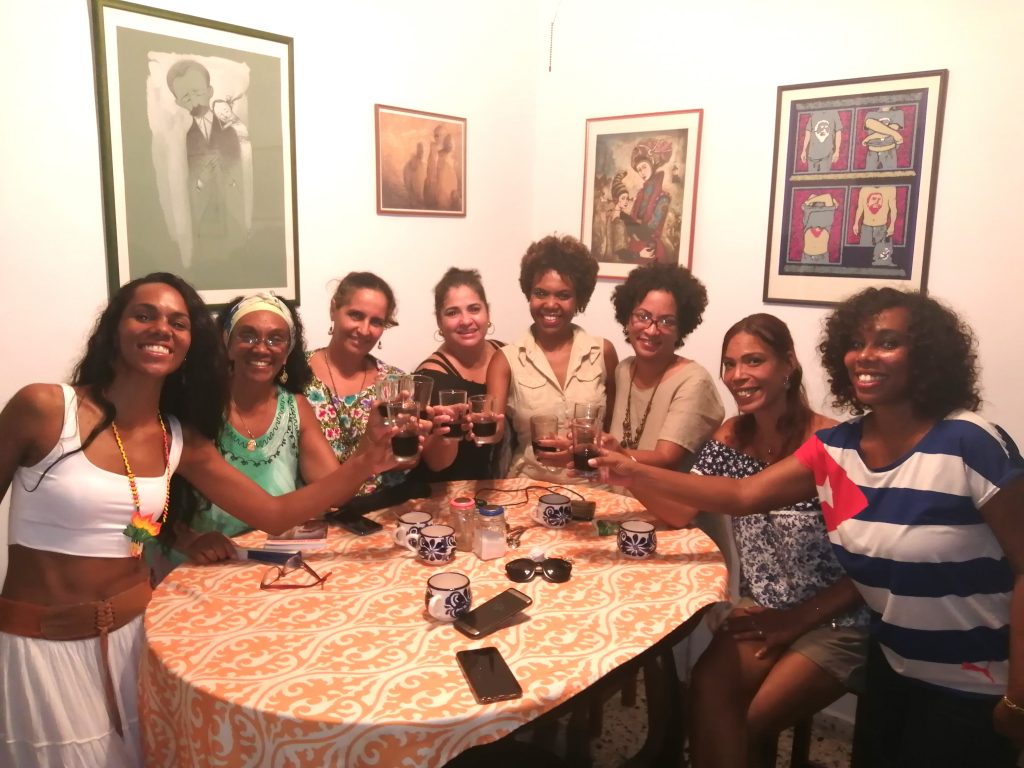
When the meetings ended I continued writing on the blog, turning my concerns there, hence the name “Lo Personal es Político” (The Personal is Political), because I realized that we all go through common experiences despite our pluralities, subjectivities and experiences of life. We are mirrors, although each one gives her life a different reflection; our realities communicate through very powerful conductive vessels. The story of one tells that of many, and seeing the stories of many, both in Cuba, as well as in Mexico or Argentina, where I have militant friends who also nurture me, was what motivated me to write on the blog.
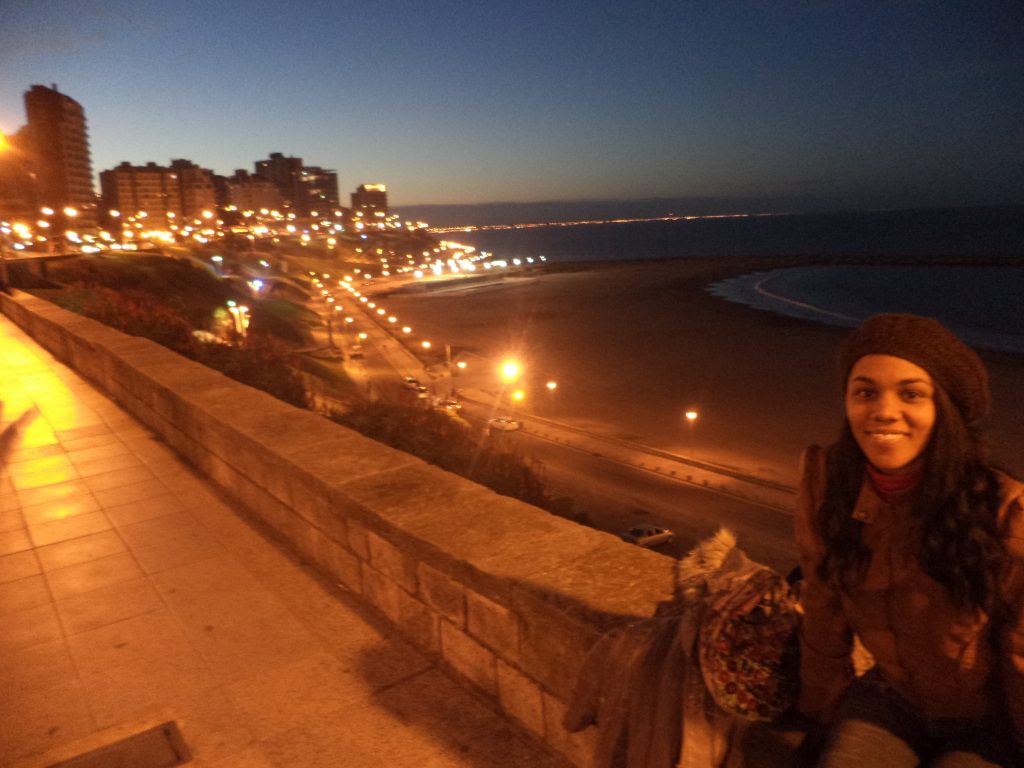
How do you live your spirituality and your link with the Yoruba religion after emigrating? Has that experience changed for you since you’re out of Cuba?
In these ten years that I have been away from Cuba, where I have spent the most time was in a town where I was not close to any person practicing my religion. So I have carried out my practice in a personal capacity, alone. However, in this place where I now live I have found other Cubans who practice the Yoruba religion and I am just getting to know them precisely because after moving here I started looking for the things I needed to practice the religion, in stores that sell religious items and such, and in that search I found humanly very nice people, from different provinces of Cuba, but we still haven’t done any joint work. The truth is that now, knowing that they are here, I feel less alone than before. From Cuba I have always had the support of my godmothers, my godfathers, my mother, the people who take care of me a lot from a distance and are always very attentive to me, but it is good to have someone close who can help me if some emergency came up, if you suddenly need to buy something for an urgent job.
On the other hand, I feel that in addition to my Afro-Cuban rituals, I am steeped in Mexican spirituality, its rites, and its worldview. When I arrived and discovered all the multidimensionality of the Mexica, Mayan, Aztec and Nahuatl worldview, I found it fascinating. I loved the “doñitas,” who tell you through their orality how wonderful and profound the indigenous worldview is here. It’s something that when they tell you the history of America and Mexico in Cuba they don’t even come close. So being able to live with that beautiful and ancient spirituality is a food that I have embraced since I arrived, and that in some way nourishes my way of relating to the world, to life and to nature beyond the Yoruba worldview that I already had incorporated when I arrived in Mexico.
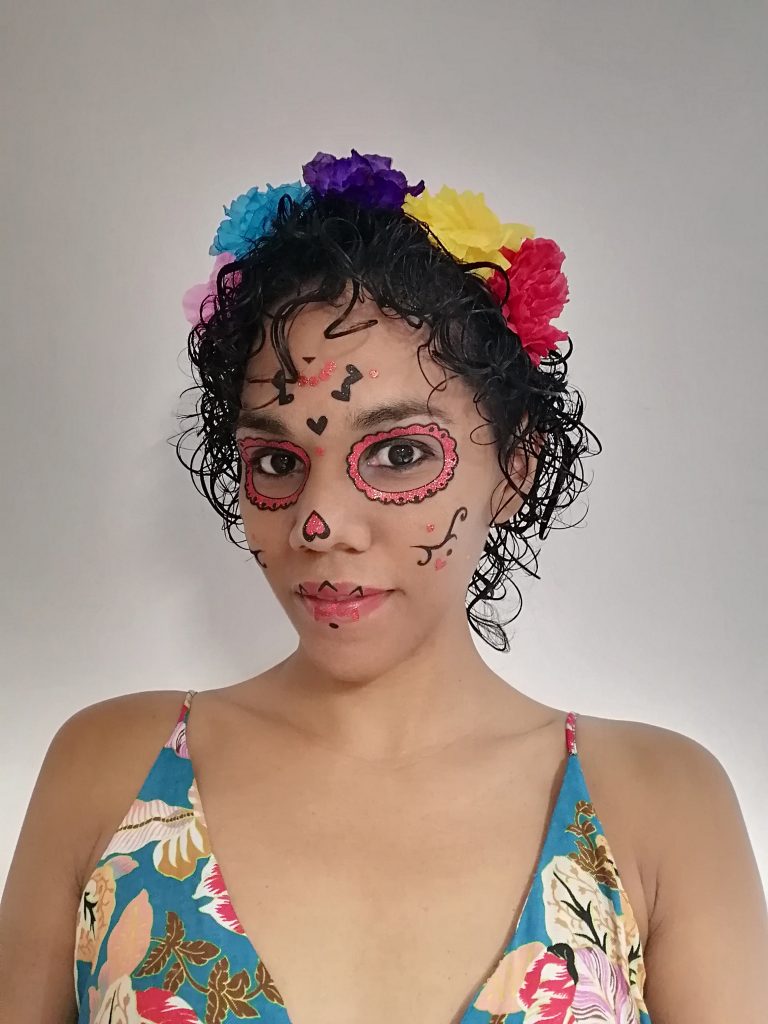
In the midst of all this, I also practice my ancestral religion: the Yoruba. Although I wouldn’t say that my religious practices are mixed with what I have learned here in Mexico, there are times when I see a strong fusion appear in my practices. On the Day of the Dead, for example, I make offerings to Eggun. I have done my service to Eggun on several occasions and at the same time I have placed my Day of the Dead altar next to it, why not? If I have my Egguns and my dead, why not honor them together?
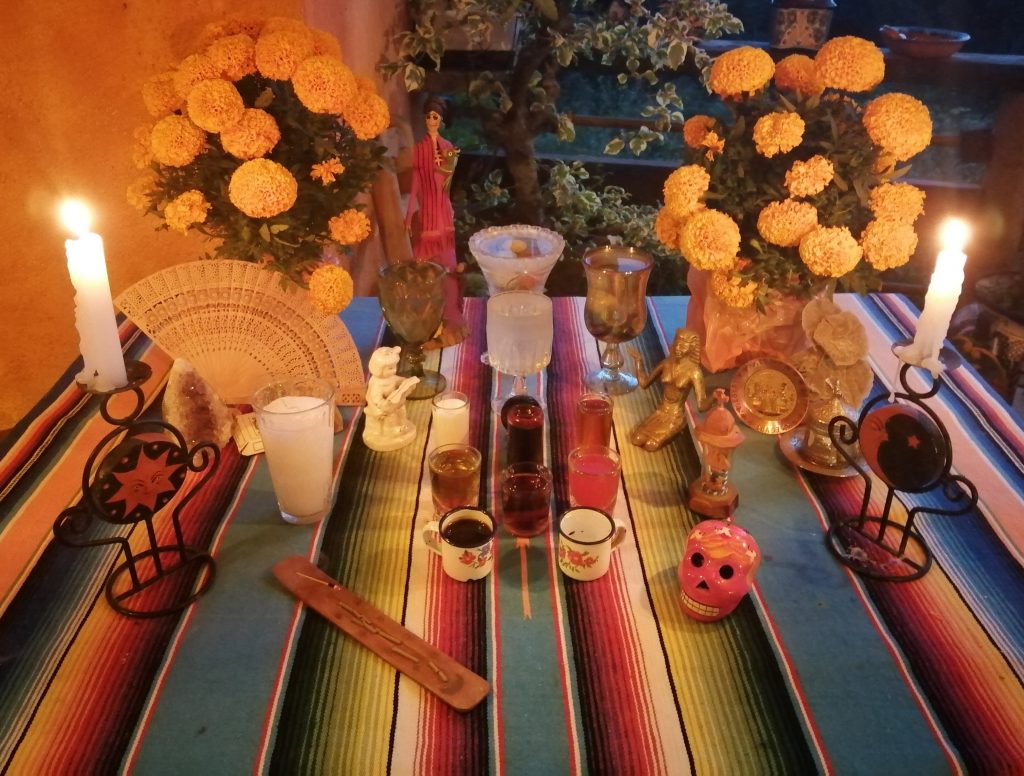
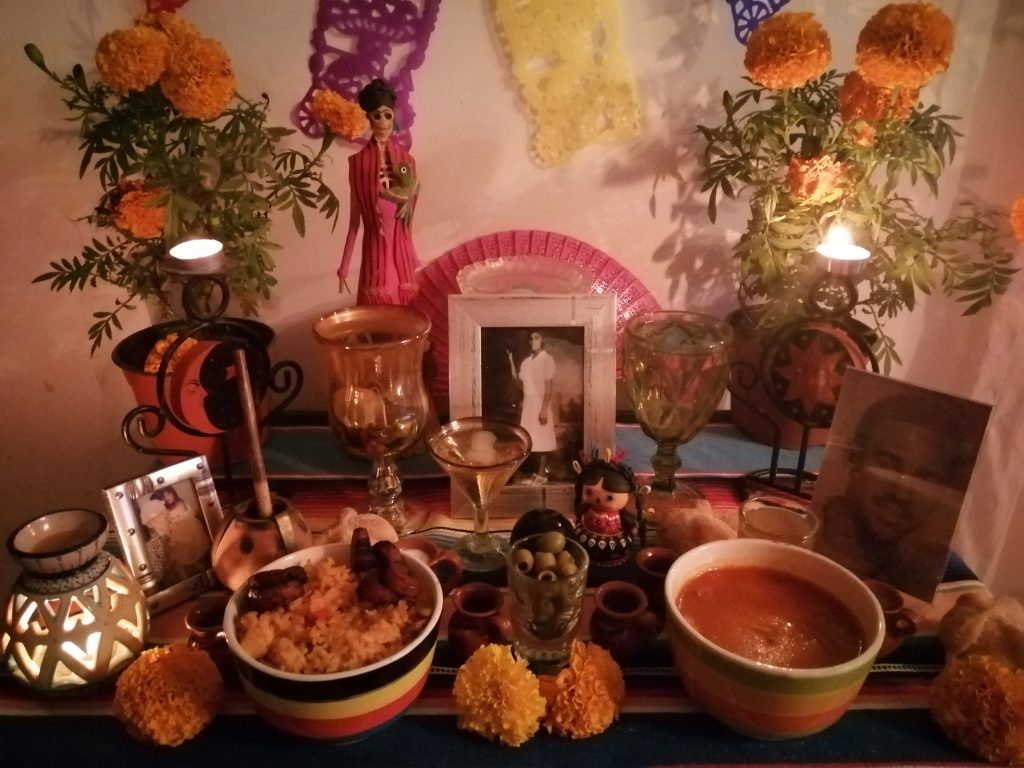
Did you decide to have your son in Cuba?
Yes, first because my family is there. Second, because it didn’t make sense to go through the whole process of motherhood here when my partner and I were migrants. That’s why, when we got pregnant, we decided to do everything in Cuba and give birth there, where I also have a sister who is a doctor who followed up the whole process. It was nice, I was with my “herd,” despite all the readjustments that motherhood implies, despite all the obstetric violence that I suffered, I really enjoyed having my family close by.
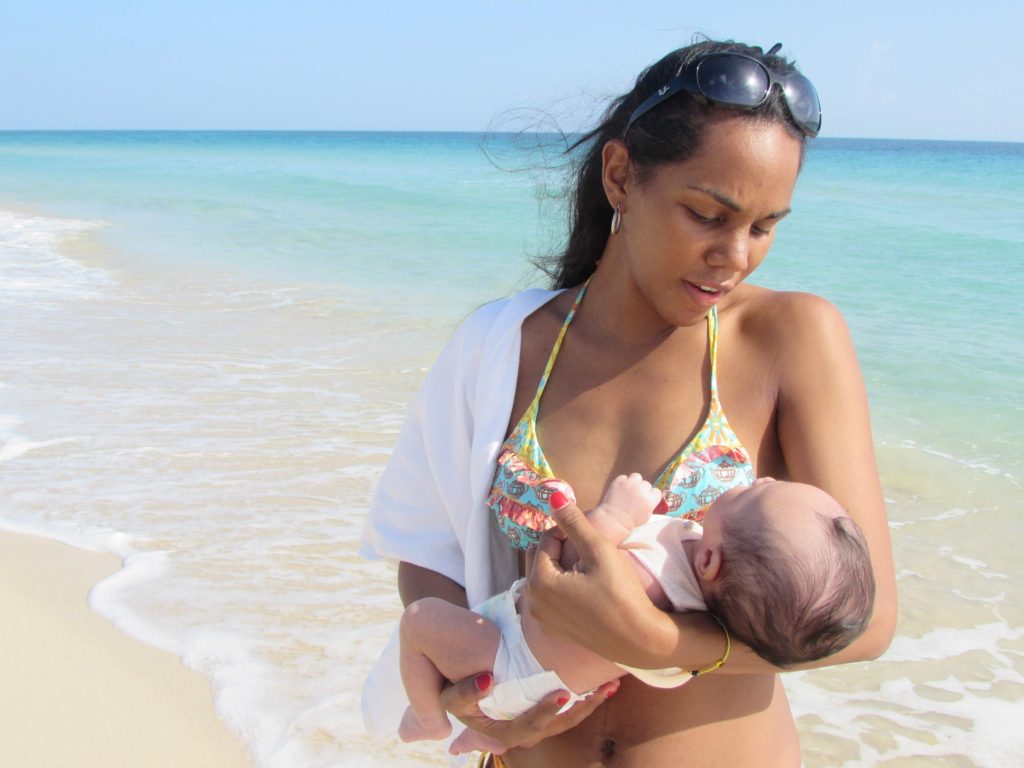
At that time my partner was also with me there and we both felt very strong support from my family, that is why five months after the child was born, when we decided to return to Mexico, it was that we knew the loneliness of raising a child when both of us were migrants. At home it’s him and me, both of us, at the same time, dividing the housework, and even then it’s not enough. We go through the scares alone, the fevers, the falls, the difficult situations. Although the family is present through calls and others, it’s not the same.
In the place where I lived then there was no community of Cubans or Argentines either; we only managed to have that when the child was grown up and we formed a network of people who supported each other: I took care of my friends’ sons and daughters, and they took care of mine. That was important for the upbringing of our son being both foreigners here.
How is Cuba present in your daily life? Where is your home today?
Cuba is always present for me and I do not resist it. There is no single way to emigrate or live the migratory experience, nor is there a way to experience Cuba or a method to forget about it. Also, it’s not going to happen. That is why Cuba is in my day to day, in everything: in the news, in my way of thinking about the world and my reality here when I compare it with the good and the bad that Cuba has. There is always that osmosis of thought and reflection because there comes a time when the borders start dissipating, they are there, as a culture, as a formation, separated, but when it comes to thinking about the world and life they become diffuse and porous in your head, they come and go.
When I go to Cuba I think: I’m home. But when I come back here, where I live, I feel the same. The home is where the people you love and consider part of your life are. The home is the other, your bond, your strongest and most beautiful affections. The home is there: where those little souls that throb in yours are present.

